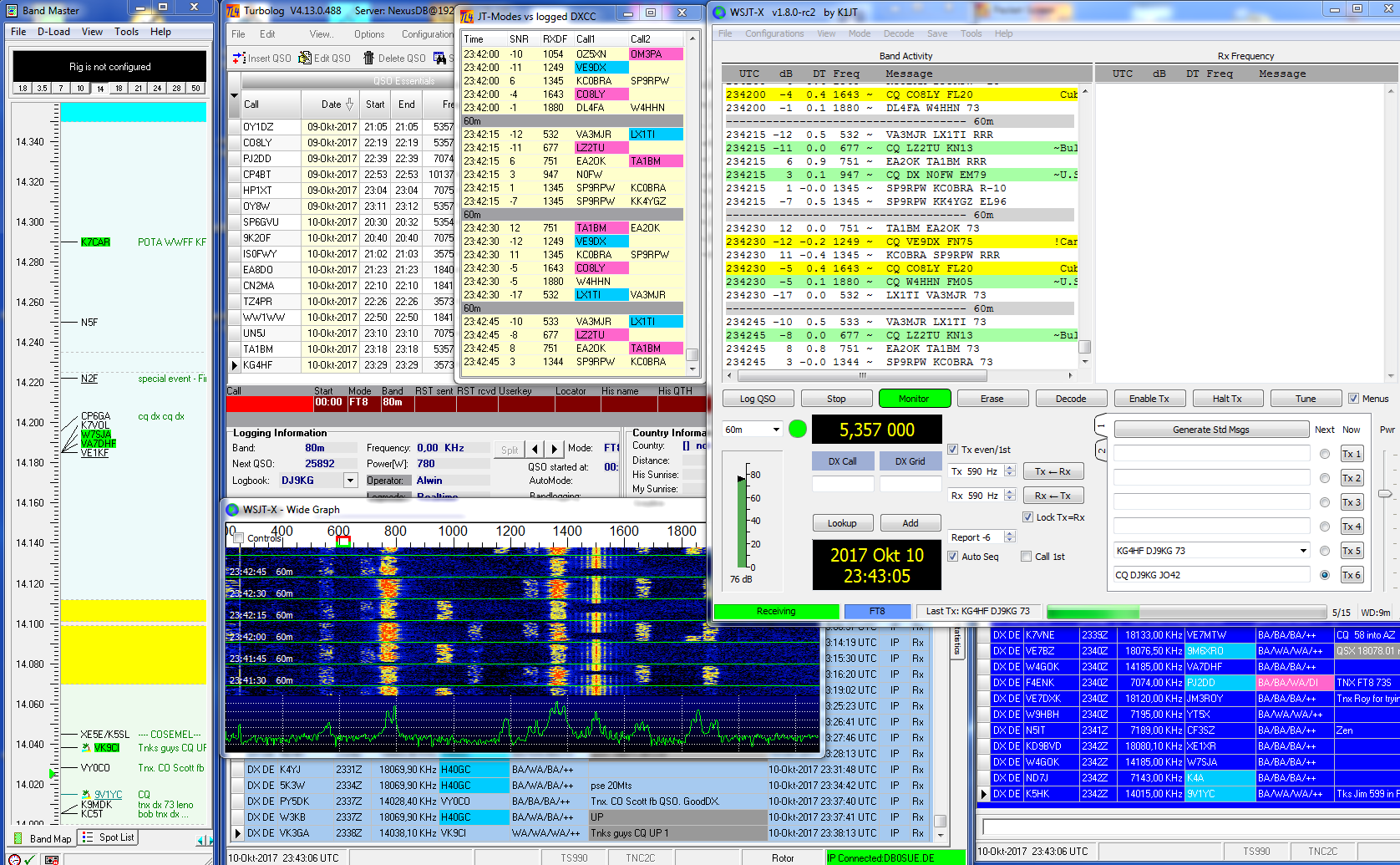
The following screenshot shows the implementation.

Turbolog4's Adjunct Activity box is attached and lined up to the left of a WSJT-X shell.
Please note the highlighted calls.
You enter TurboLog4 by the sophisticated logging window:
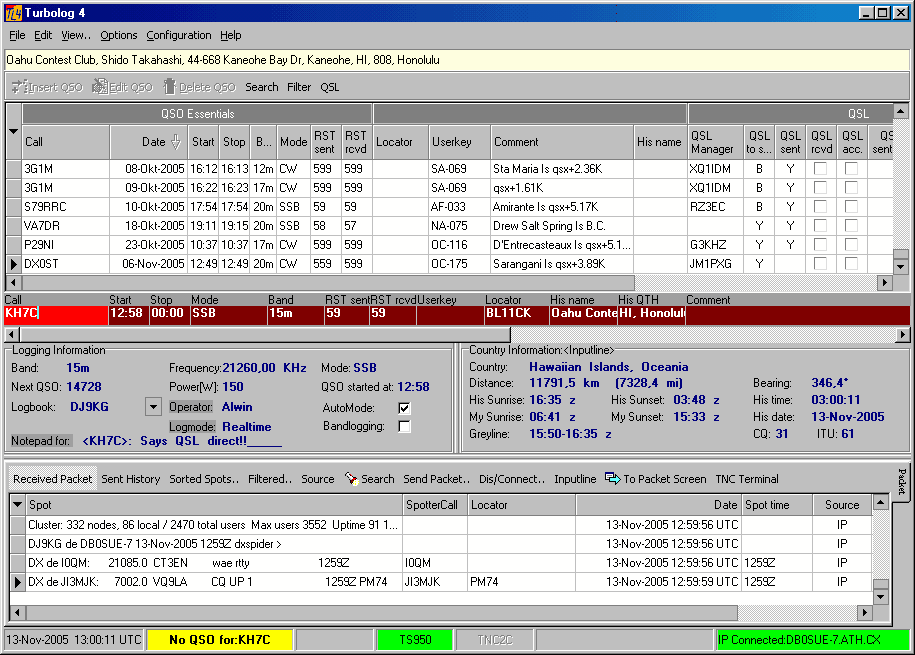
The window is focusing on the log input line which allows fastest possible logging by means of numerous automatic funtions ( stacks, fixed inputs, etc… ). These features can all be customized and equipped with special operations such as Realtime -, Contest - and Postevent logging. Find the logbook frame right above just as you were writing the last enty line of a paper log…
There is comprehensive logging and country information displayed for every prefix or call entry. The International Callbook is fully implemented and its information displayed in a separate line. Full DXCC information pops up on every call or prefix entered. Of course CAT transceiver control is available in both directions and fully integrated as well. In order not to miss an important Packet spot while logging the lower part shows a powerful Packet facility which …again… can be fully customized. It can even be completely closed in case there is no Packet avalable.
The next screenshot just indicates one example of the kind of customizing that is available in TurboLog.
Shown here is Customizing of the Logbook's Grid View:
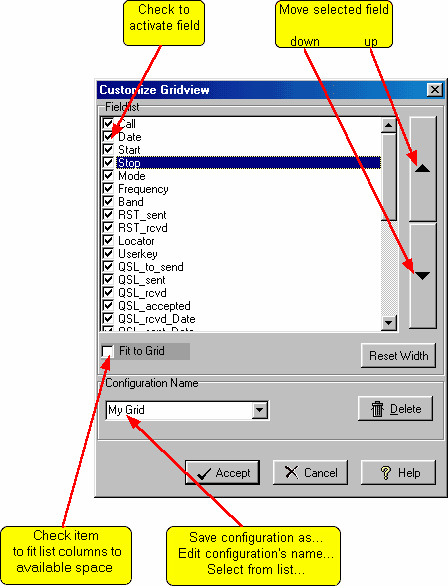
This picture illustrates TurboLog4's comprehensive online Help system which is updated with every new release. A user's manual with full descriptions for all features is provided as well.
Another highlight is TurboLog4's
Packet Window:
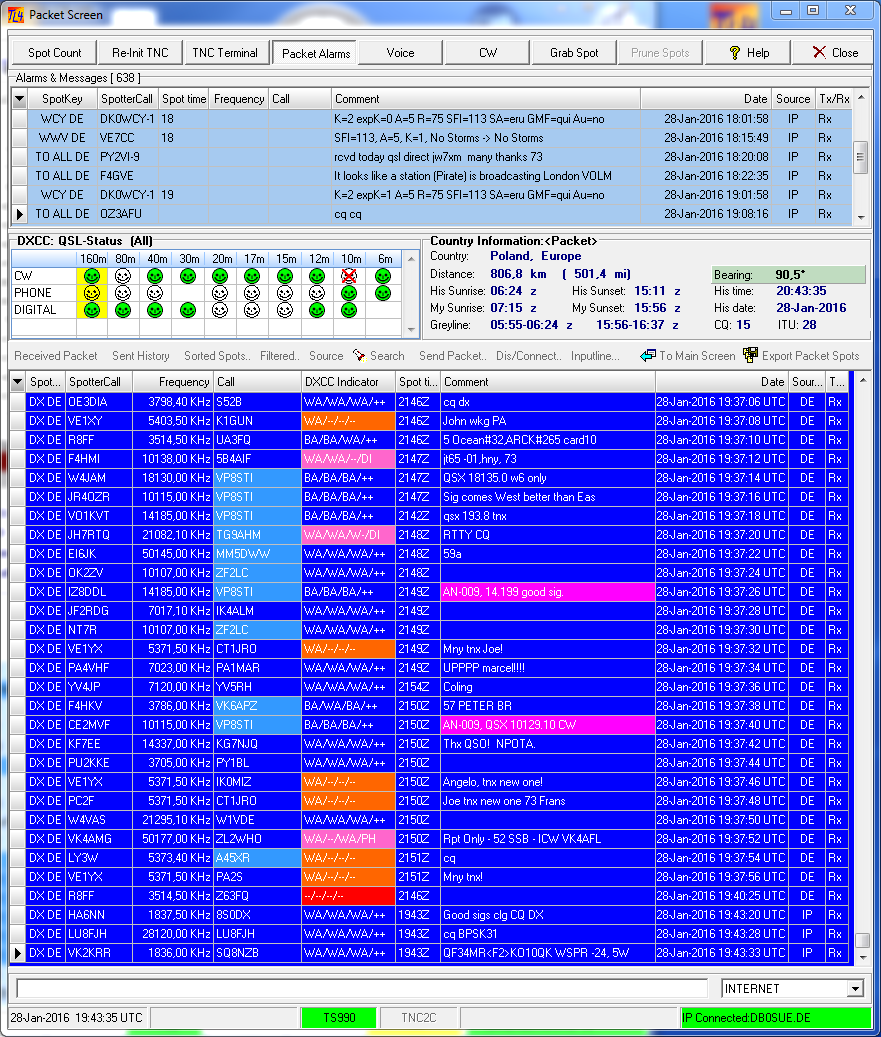
This Packet working bench contains all controls for the full spectrum of Packet operations (Filters, Analysis, Alarms, Cluster Communication, etc… ). Packet Radio and Internet clusters can be connected all at the same time. Spots are analyzed and signalled by voice and/or CW alerts. The upper frame contains all broadcast messages and alarms which were set on calls, prefixes and bands. Full DXCC information which can be toggled by mouse click between Worked- and QSL-Status is displayed for every incoming spot. All spots are available in the lower Packet frame which can be scrolled and fully customized.
Of course spots can be grabbed and automatically transferred to the logging fields. There is complete and automated interaction with the logging, CAT and Packet operations.
TurboLog4 is future proof in all aspects. This is demonstrated by means of the setup facility for
Bands and Modes:
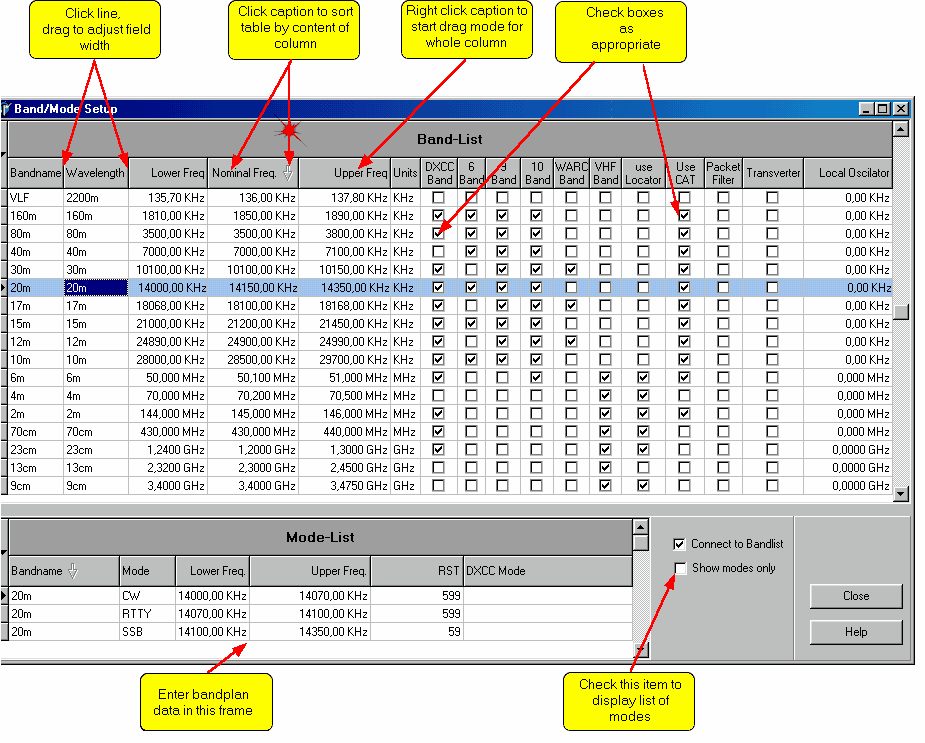
Bands, Modes, Band plan and a large variety of related logging features can all be customized and extended at any convenient time. Since Bands and Modes are implemented as a separate database highest possible flexibility can be offered to the user. DXCC support is a crucial part of TurboLog4 and implemented with all aspects, instant popups, comprehensive graphical displays and numerical summaries. There is automatic tracking country by country, band by band, mode by mode and period by period along with sorting by continents, zones, stati, Commonwealth, etc…
The following screenshop shows an example of the
DXCC Listings facility:
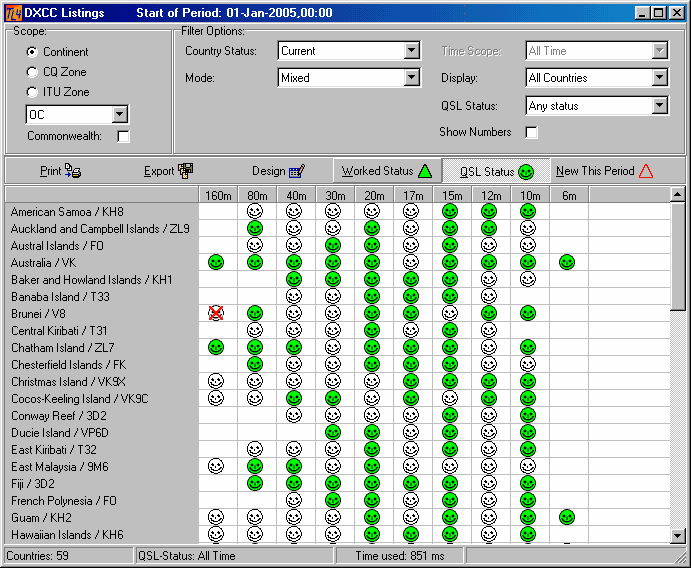
The example shows a listing for the continent Oceania. Data from the DXCC database can be extracted in various ways. One of the most interesting aspects is tracking how the user has performed in terms of DXCC standings
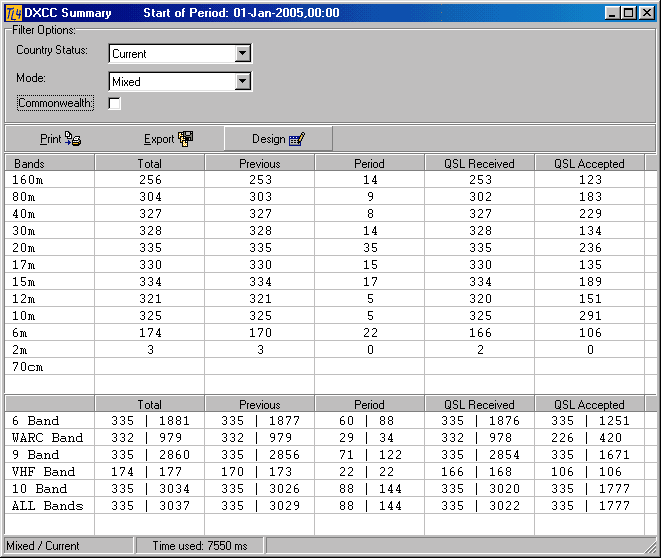
Of course summaries can be displayed for every mode.
Since TurboLog4 features the powerful NEXUS client-server database system virtually any information in any logging field and combinations thereof can be retrieved. Just to indicate the kind of power handed out to the user the following Logbook Listings Display is shown:
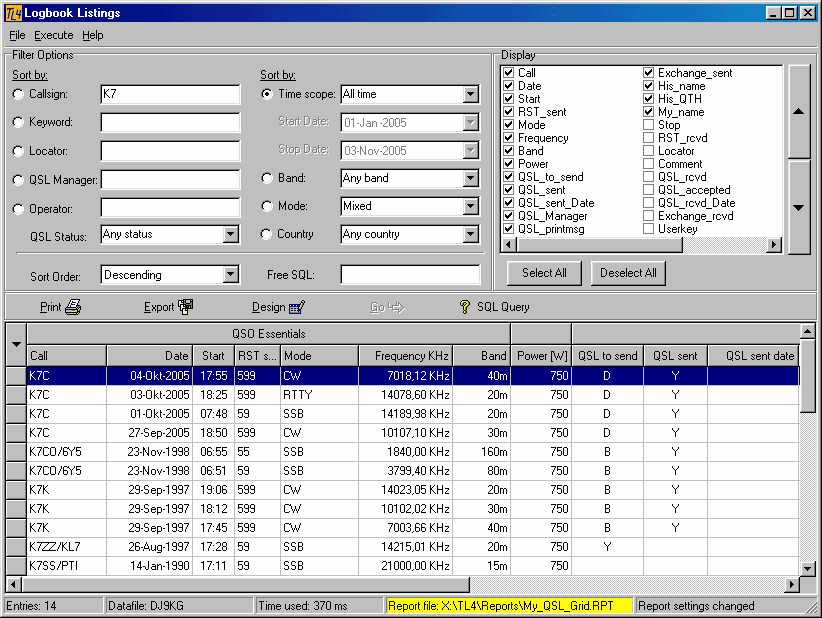
Similar facilities are available for
Of course there is a fancy QSL Label printing and designing facility in TurboLog 4. The following prints of default labels just serve to give an impression of what the user can create:
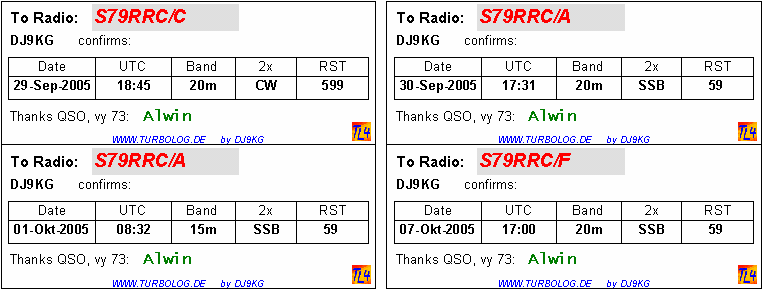
… or another design for a different label sheet:

.. or some Multi QSO Labels
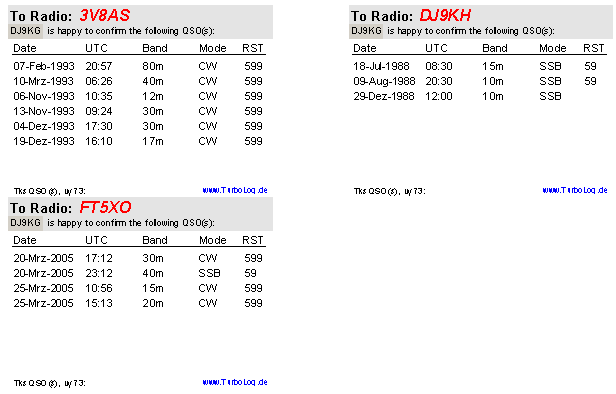

The MultiMode Facility in TurboLog 4 is designed for running digital Modes such as RTTY, PSK31, PACTOR, AMTOR, PACKET, CW-keying, etc. by means of an external device. This approach does not depend on the PC's soundcard. It will normally already be heavily loaded otherwise with tasks such as Packet voice and CW alerts. Thus, TurboLog 4 allows you to turn on all audio alerts even while you are running the digital modes. This is a future proof approach without any pitfalls or restrictions. It makes full use of all the other features available in the program by integrating them into MultiMode operations ( automatic placeholders for all logbook input fields, etc. … ).
This will not be feasible with any of the soundcard based methods which typically could only be integrated partly ... at best.
Turbolog supports the following devices for the digital modes ( for the time being ):
Other devices can easily be included into the open architecture by the user himself.
The following is a screenshot of the MultiMode window, user customized for the PTC-II:
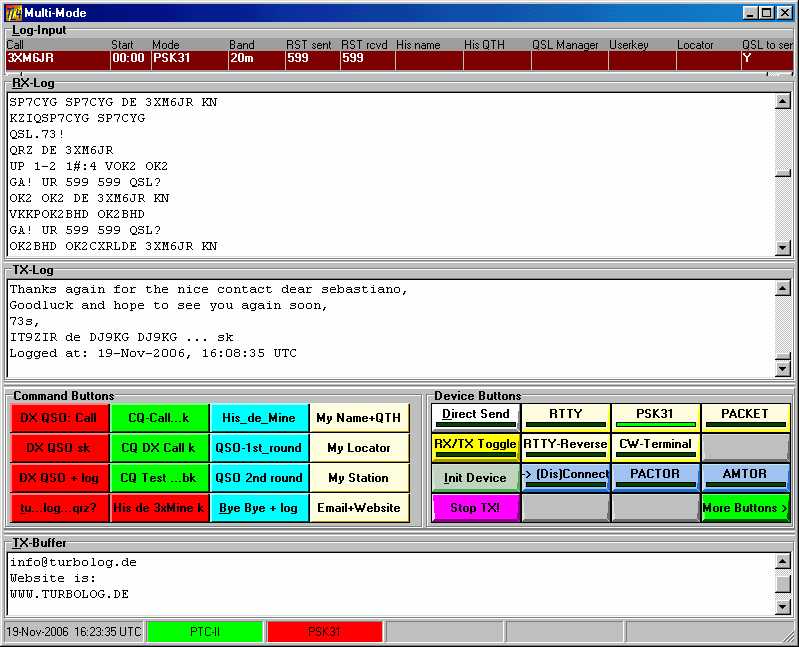
Besides supporting hardware based external devices for the digital modes the Multimode facility in TurboLog 4 also allows to run *Soundcard Based BPSK Modes *such as PSK31 and various other QPSK derivatives. The soundcard based mode is treated like another device. This results in a simple upset procedure of just a few mouse clicks and the full range of Multimode features being avilable. The facility is fully integrated. This means there is unrestricted access to all logging and data base features. The facility is equipped with a default set of scripts and macros under the Command Button array while the Device Buttons allow to control the soundcard operation. The default set of buttons will allow the user to start PSK31 right away. Of course all scripts can be customized to the user's needs. In order to facilitate easy tuning to PSK31 signals there is a waterfall and a realtime spectral display which are contained in a seperate frame attached to the Multimode window. Both are shown in the following sreenshot in an overlay position:
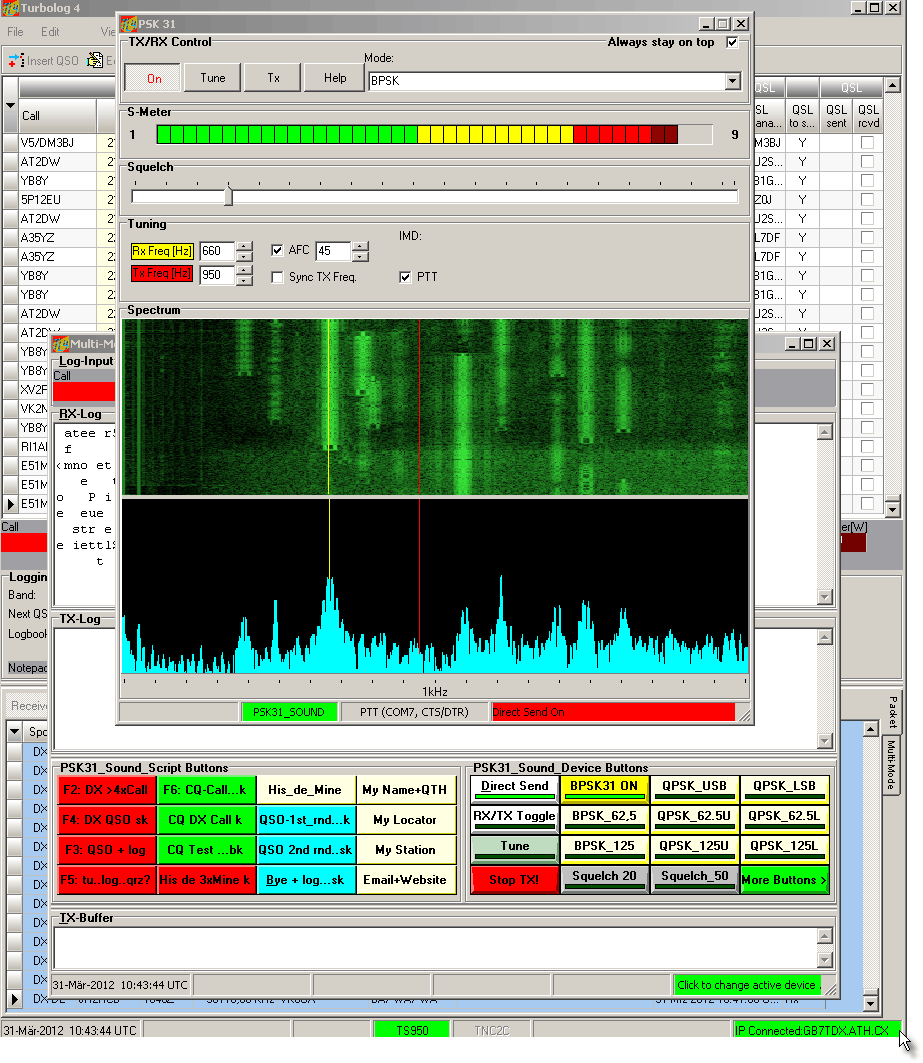
MMTTY RTTY engine fully embedded in TurboLog
MMTTY is implemented in TurboLog as another device for the digital modes. It is fully under control of the versatile MultiMode facility. This also includes start and shut down of MMTTY. TurboLog allows to access all features that are available from the MMTTY engine. This includes all parameter customization for the signalprocessing of the 3 types of RTTY demodulators, in particular band pass and notch filters. This allows to operate RTTY reliably under even harsh band conditions
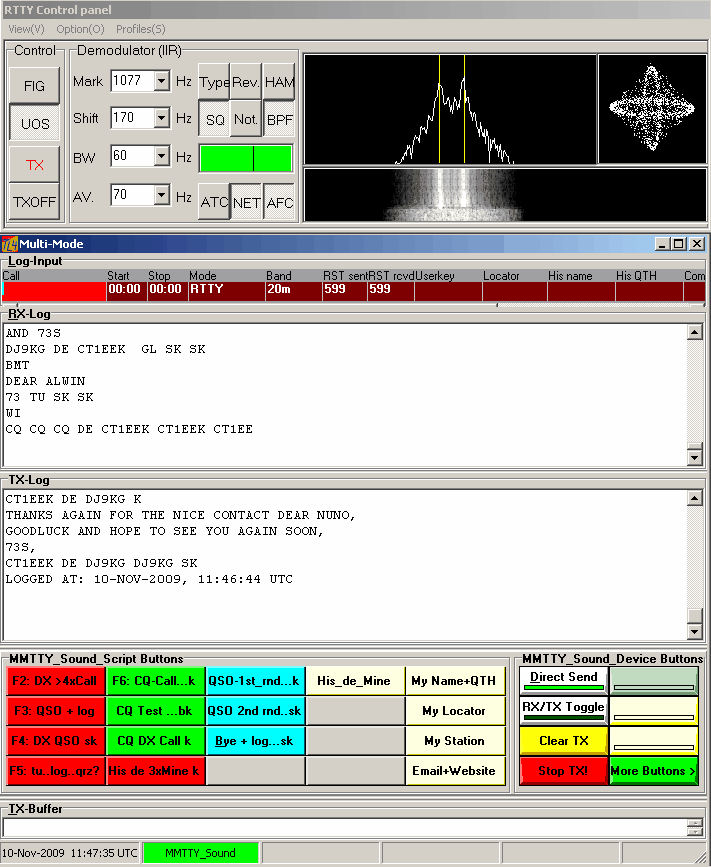
TurboLog provides excellent IOTA Support for the ambitious island chaser. The user can not only search for log records counting for the IOTA race and list his IOTA records in order to submit these records to the IOTA committee. Moreover, as shown in the screenshot below, IOTA achievements can be monitored in greatest details. Thus, if you come across a station e.g. from Indonesia and enter YB, a hotkey will instantly show you how you performed on all the islands belonging to this country and which potential islands the prefix or call under investigation may offer. This will help you to work the stations which you really need for increasing your IOTA count.
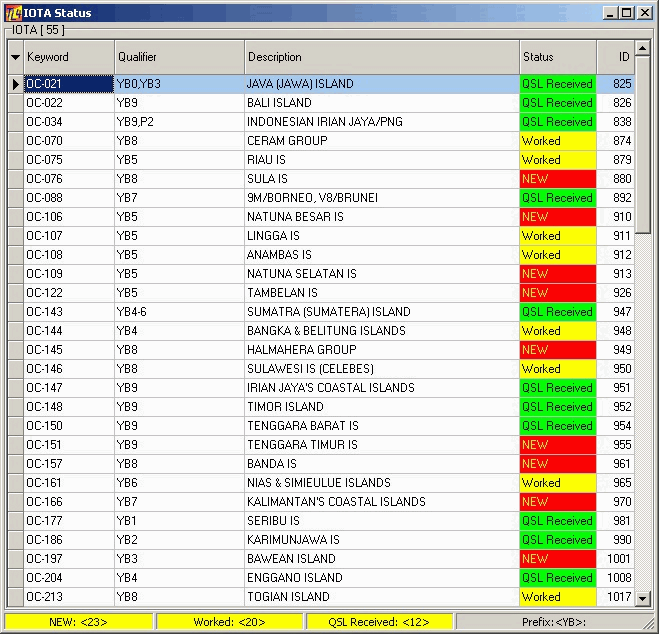
The forestanding information provides just a very small portion of all the many other features. Just download and take time to test the shareware version. TurboLog4 is a living project. There is permanent developing going on in order to improve the product and to include new features as requested and suggested by the TurboLog4 usership.